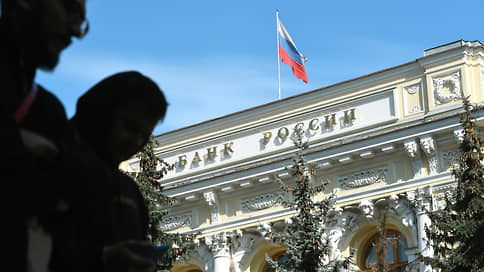The Central Bank was intercepted for liquidity – Newspaper Kommersant No. 183 (7384) dated 10/04/2022
[ad_1]

Banks, due to the increased demand of Russians for cash after the announcement of partial mobilization, sharply increased the volume of borrowings from the Central Bank. Thus, they make up for the lost liquidity. And although in the current conditions the outflow of funds from banks can hardly be corrected by raising deposit rates, major players have already taken such a step.
As follows from the statistics of the Central Bank as of October 3, the amount of the regulator’s requirements for loans to banks increased immediately by 40.8% (or 476.9 billion rubles), to 1.6 trillion rubles. This is the highest figure since the beginning of August, when the volume of debt increased by 667 billion rubles. Now the daily growth was mainly provided by short-term requirements – for up to seven days: the volume of debt increased immediately from 656.4 billion to 1.1 trillion rubles.
The current surges are weaker than the dynamics of February-March, when the average amount of debt to the Central Bank at the beginning of the day was 1.4-1.7 trillion rubles. with peaks above 3–5 trillion rubles. on separate days. In subsequent months, the average amount of debt decreased to 647.4-840.2 billion rubles. at the beginning of the day in April-September.
In general, according to the data of the Central Bank, the banking sector is in a state of structural liquidity surplus. In particular, as of Monday, banks’ funds in deposit accounts with the Central Bank amounted to 2.95 trillion rubles. against 2.998 trillion rubles. the day before. The balances of banks’ funds on correspondent accounts with the Central Bank over the same period increased by 265.8 billion rubles, to 2.8 trillion rubles.
According to experts, the increase in borrowings from banks is associated with a sharp increase in cash in circulation. So, for example, on September 30, the volume of cash increased by a record 144.8 billion rubles since the beginning of March. This is the maximum volume after March 4th.
The increase in cash in circulation indicates the reinforcement of cash desks and ATMs by banks in order to ensure a potential increased demand for cash, Deputy Chairman of the Central Bank Alexei Zabotkin noted last week. “We observed the first wave of cash growth on September 22–23 (114.2–132.1 billion rubles— “b”), after which the growth rate slightly decreased, but on September 30 it exceeded the values of the first wave,” notes Yevgeny Kipnis, Senior Analyst at Alfa-Bank. Banks make up for the shortfall in liquidity by borrowing funds from the Central Bank, mainly for a short period, he explains. “The situation, of course, is not comparable to February-March, but there are unrest among customers. Banks insure themselves by providing themselves with additional liquidity,” agrees Yury Belikov, Managing Director for Validation at Expert RA. But there are other related reasons as well. Also, Mr. Belikov continues, there is a slight decrease in the activity of banks in the interbank lending market, because in the current conditions of information opacity, risk assessment for a counterparty is complicated. In such periods, according to him, the popularity of the mechanism of lending by the Central Bank may increase.
Evgeny Kipnis from Alfa-Bank believes that the situation can be expected to normalize in the coming weeks, provided that the external background stabilizes. “In addition, certain banks have begun to raise rates on a number of deposit products, which should also contain the outflow of funds from the banking system,” he notes. In particular, against the backdrop of increased demand for cash on Monday, VTB announced an increase in deposit rates. Earlier at the end of last week, FC Otkritie and Sovcombank did the same. The increase in rates is in the range of 0.5-1 percentage points (p.p.). From October 7, Promsvyazbank also raises the rate on the savings account for new customers, but, however, only for the first two months (+1.25 percentage points), while the bank simultaneously lowers base rates from 6.25–6.75% up to 4%.
However, it is not certain that the increase in deposit rates will work in the current situation. “If we are talking about outflows of funds from banks into cash, then for the category of clients providing them, an increase in nominal deposit rates by 1 percentage point will not now become a deterrent,” says Mr. Belikov. This is not the choice of the best savings tool, but the desire to withdraw your money from the banking system, including to finance unplanned expenses, the expert concludes. According to him, in a situation of volatility, it is more logical for banks to diversify their resources than to try to keep depositors, whose funds are traditionally very sensitive to the information background.
[ad_2]
Source link





